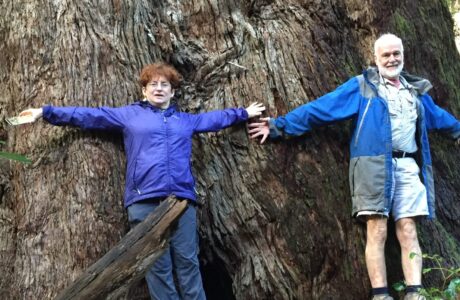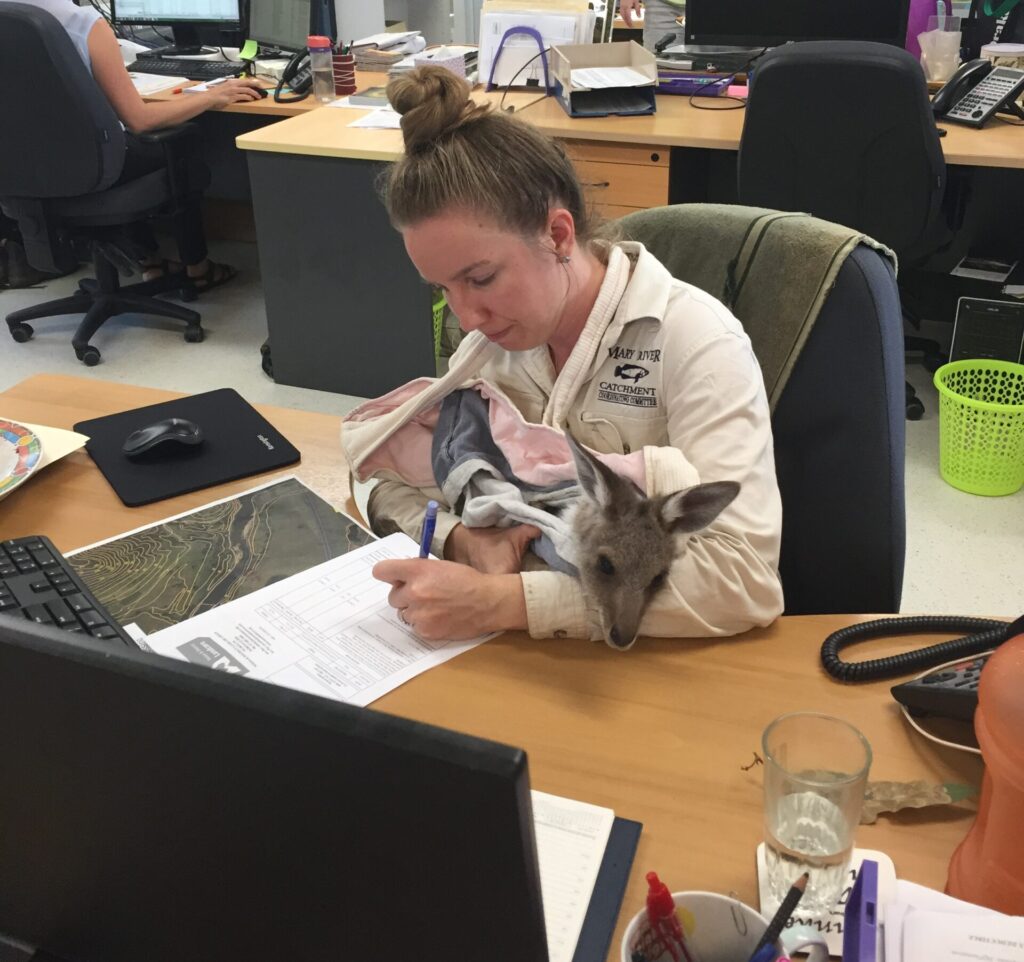About the Mary River catchment
The Mary River catchment is one of the most diverse catchments in Queensland, covering 9595 km2 from Maleny to River Heads near Hervey Bay. A population of over 200,000 people lives in the catchment, on the land, in urban areas and in rural subdivisions. Economic activities in the Mary River catchment range from dairying, beef, forestry, fishing, horticulture, mining, sugar, farm forestry, tourism, sand and gravel extraction and small industries. The Mary River itself is 310 km long and water quality varies from fresh through to saline in the estuarine areas where the river flows into the RAMSAR listed wetlands of the Great Sandy Strait, home to dugongs, migrating whales and migratory birds. This complex catchment is subject to high intensity cyclonic rainfall on very steep slopes and is experiencing major changes in land use, increased competition for water resources, and rapid population growth (being adjacent to the Sunshine Coast and Hervey Bay).
The catchment provides habitat for a suite of threatened aquatic species including the critically endangered White-throated snapping turtle, and the endangered Mary River cod and Mary River turtle. The Giant barred frog and Australian lungfish are both classified as vulnerable to extinction. These species survive in isolated pockets where water quality is healthy, the river is shaded and cool, and riparian vegetation is intact. However they face many threats to their existence from loss of habitat, predation, human interference, poor water quality and climate change.
In the early 90’s the Mary River was described as one of the most degraded river systems on the east coast of Australia. Since European settlement in the 1800’s, the river system has been subjected to immense pressure from a range of factors including land clearing, gold mining, sand and gravel extraction and increasing urban and rural water supply. As well as towns along the river drawing water for urban use, water from the catchment is also transported to the Sunshine Coast and Noosa to service an ever-growing population.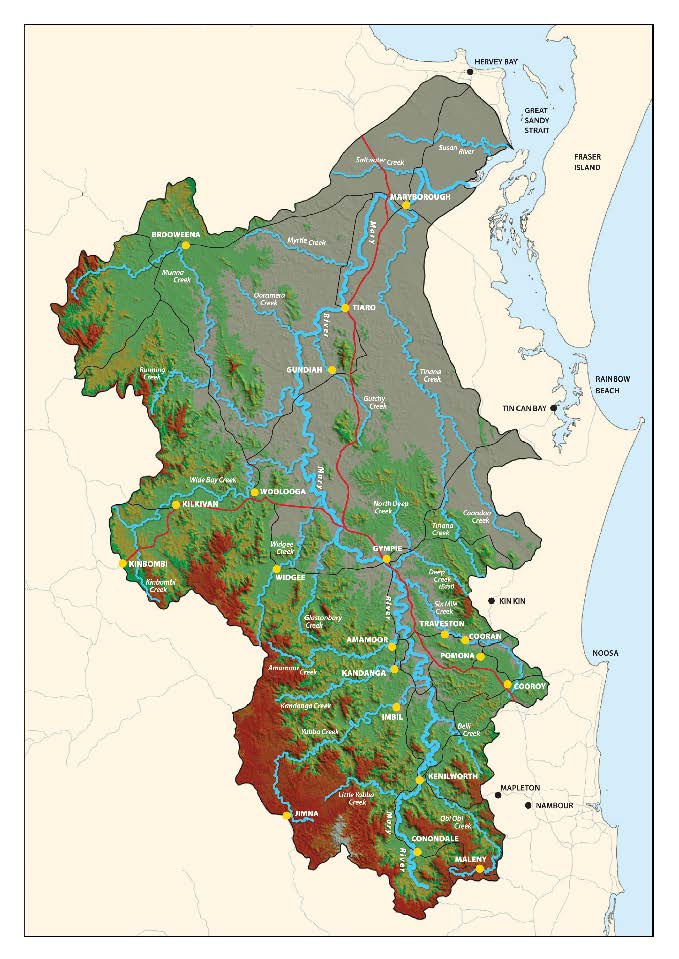
As far back as the early 80’s, the Mary River cod, a federally listed endangered species, was seen as the canary in the coal mine, when it’s numbers dropped to such low levels due to loss of habitat and over fishing that there was concern that if something wasn’t done, this iconic fish and top order predator of the Mary River system would become extinct in our lifetime.
Formation of the MRCCC
In 1991 a pioneering group of community and industry leaders led by well known Gympie local Guenter Kath, had an idea that they could tackle the issues facing the river on a “whole of catchment” basis, involving all those who had a “stake” in the river system, which included government at all levels and the wider community. Three community meetings in the catchment led to the establishment of a Committee with representatives of government, industry, farmers, landcare and community organisations. The Committee began the task of working out a way forward by developing a Catchment Strategy that included actions aimed at improving the health of the catchment.
Now, almost 30 years later, the MRCCC employs 9 Environmental Scientists who collectively have over 100 years experience in the fields of sustainable land and water management, agricultural systems, riparian zone systems, water quality monitoring and data analysis, aquatic health assessment, sub-catchment planning, threatened aquatic species monitoring, geographical information systems and community education.
The MRCCC provides technical advice and in some cases modest financial incentives to rural land managers to help them undertake actions that improve water quality and aquatic biodiversity, and improve their productivity and sustainability. Managing stock access to waterways, installing off-stream watering points, removing weeds and revegetating with local native species are key projects for the MRCCC and landholders we assist.
In recent years the Mary River catchment has been recognised as the southern-most catchment which impacts upon the Great Barrier Reef. As a result, the MRCCC receives funding from Federal Government Reef Programs which enables this work with landholders to be carried out. The Queensland Department of Environment and Science, Seqwater, the Department of Transport and Main Roads, Sunshine Coast, Gympie, Noosa and Fraser Coast Councils and HQPlantations also support the work of the MRCCC.
In 2005 the MRCCC established a Public Fund to enable tax deductible donations to be raised towards funding a permanent home for the MRCCC and staff at 25 Stewart Terrace, Gympie. During business hours, the MRCCC offers an information service and a basic water testing facility for dam, bore or creek water. The Public Fund is also used to support research and a range of other projects in the Mary River catchment.
Organisation Profile
The Mary River Catchment Coordination Association is a very active Integrated Catchment Management organisation overseen by the Mary River Catchment Coordinating Committee (MRCCC), which comprises interest sector representatives from 25 industry, community and government sectors with interests in sustainable natural resource management. The group was incorporated on the 17th March 1995 and today, collectively, reaches out to thousands of catchment residents through our stakeholder Delegates and associated networks throughout the catchment, which encompasses an area of 10,000 km2.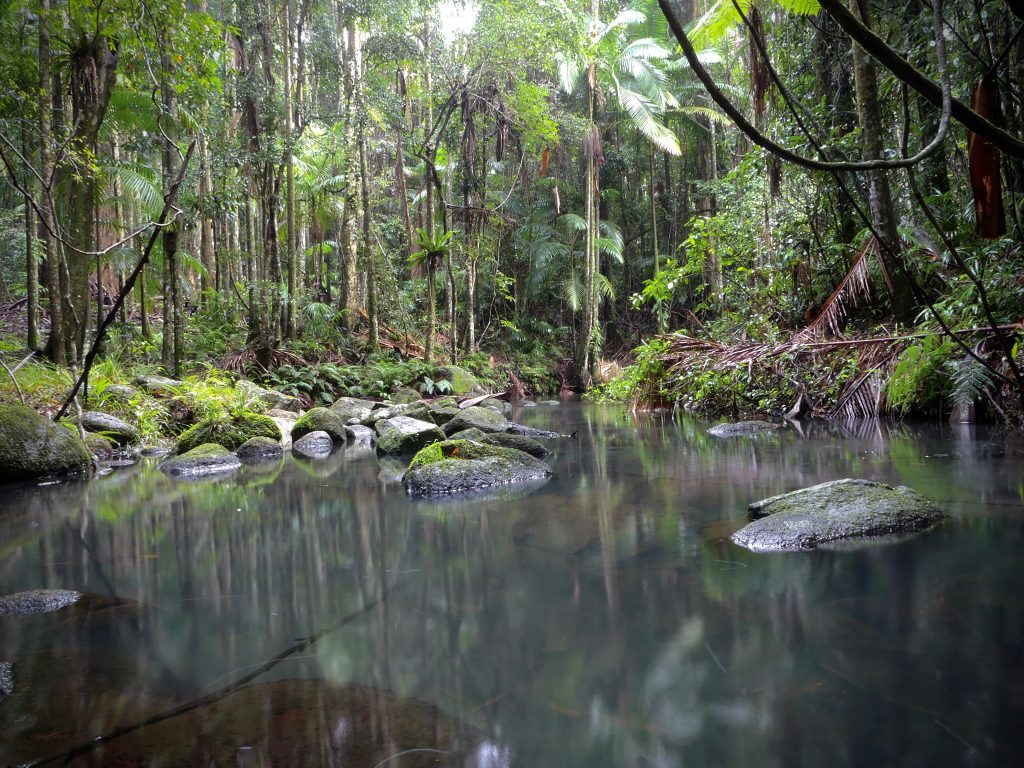
In 1996, the MRCCC’s non regulatory and cooperative approach facilitated the development of the Mary Catchment Strategy, which outlined a suite of actions to improve catchment health. An implementation plan to carry out the works needed to achieve the actions outlined in the Catchment Strategy was published in 2002. The Mary River and Tributaries Rehabilitation Implementation Plan was subsequently published in 2002, prioritising river and stream reaches for rehabilitation investment. These documents outline a 50 year strategic vision and planning framework for creating a sustainable and productive future for the catchment and were developed in active partnership with the Queensland Government, local communities and industry.
In 2016, the MRCCC produced the draft Mary River Threatened Species Recovery Plan in collaboration with multiple stakeholders, including the federal government Department of Environment, the state government Department of Environment and Heritage Protection and widespread community consultation. The implementation of on-ground actions identified in the draft Recovery Plan are underway, through support from the federal government.
Over the past 30 years, the MRCCC has successfully developed and implemented projects for a range of organisations including the Federal Government Departments of Agriculture and Environment, local government across the Wide Bay and Sunshine Coast regions, State Government including the Department of Main Roads, and regional organisations.
Since 1999, the MRCCC has facilitated the investment of over $27 million into the Mary Catchment economy, for the purpose of sustainable land and water management. Landholders undertaking MRCCC project work invariably multiply this investment significantly.
Integrated Catchment Management
An approach which recognises the catchment or river basin as the appropriate organising unit for research on ecosystem processes for the purpose of managing natural resources in a context that includes social, economic and political considerations.
History
The MRCCC was launched in 1993 with the primary objective of being a representative body of community, industry and government stakeholder with interests in integrated catchment management in the Mary River catchment. Today the committee is comprised of 28 interest sectors or delegates, and has an office based in Gympie with support staff.
Vision
A sustainable and productive catchment whereby in our lifetime the community will be enjoying the natural bounty of sustainable agricultural, fishing and recreational activities flowing from a healthy river system. Native forests growing on stable streambanks will shade the length of the river and all its creeks, where pools, riffles and snags interplay to create diverse habitat for a myriad of lifeforms.
Mission Statement
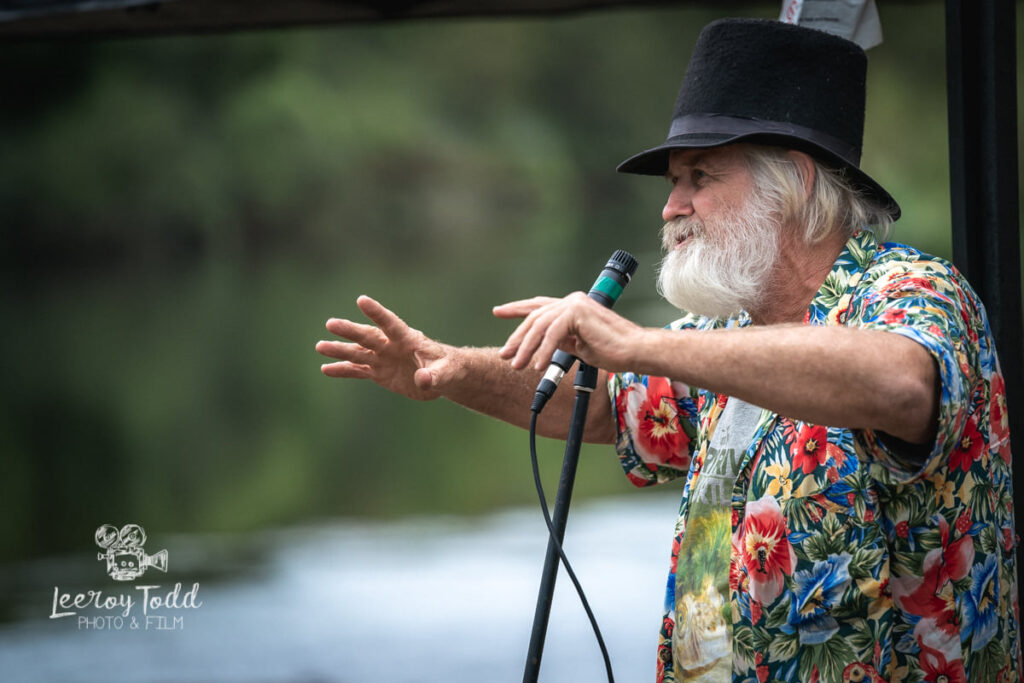
To promote within the community, through sector interests, a common view of a sustainable and productive catchment. The Mary River Catchment Coordinating Committee will work to empower those people with substantial land management interests in the catchment to voluntarily adopt actions for public good.
Our Role
The Mary River Catchment Coordinating Committee has determined key roles to guide actions:
- Education and awareness.
- Planning, particularly in assisting local government.
- Assisting interest sectors to improve practices, e.g. best management practices, code of conduct.
- Supporting Landcare.
- Consultation.
- Overview of policy, plans related to the Mary Catchment.
- Working with Government.
Key Strategies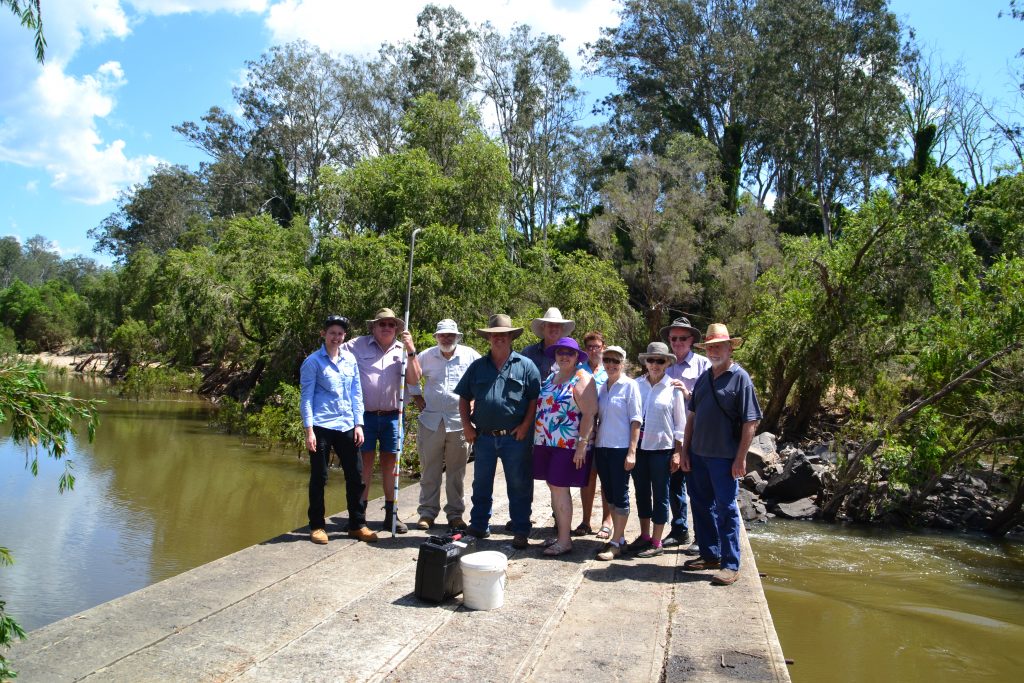
The following critical strategies are being pursued by the MRCCC:
- Support the adoption of best management practices in farming systems
- Encourage property management planning to achieve sustainable agricultural production
- Improve information delivery to landholders and industry on farm management within our variable climate
- Establish credible information on water quality in the catchment as a basis for decision-making
- Make water quality an issue – raise its profile
- Identify & reduce diffuse sources of pollution in the catchment
- Develop broad scale awareness of riparian areas in the catchment, and seek community participation in developing solutions to prevent further degradation
- Reduce negative impacts of grazing and other activities on riverbanks, with landholder participation
- Provide support for those attempting to address riverbank erosion
- Understand the extent and condition of habitat for threatened species
- Improve the habitat condition for threatened species
- Eliminate, reduce or control weed impacts to the catchment
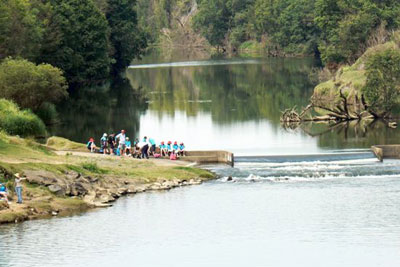
- Educate and encourage rural and urban users to be responsible for weed impacts.
Staff expertise and experience
The MRCCC currently employs 7 full time and 4 part time staff. Throughout a long history of working with the national and international scientific community, the MRCCC has amassed considerable technical and scientific knowledge about the Mary Catchment and sustainable management of its natural resources.
The MRCCC staff members are suitably qualified and have extensive experience in the field of integrated catchment management. Collectively, the team has over 50 years’ experience in the fields of sustainable land management, agricultural systems, riparian zone systems, water quality monitoring and data analysis, aquatic health assessment, sub-catchment planning and threatened aquatic species monitoring.
Brad Wedlock – B.App.Sc. (Natural Systems & Wildlife Management)
Specialist in project design, implementation and management, grazing landscapes, sustainable grazing systems, fluvial geomorphology, riparian condition assessment and flora identification, water quality monitoring and data analysis.
Eva Ford – B.Sc. (Australian Environmental Studies)
Specialist in project design, implementation and management, threatened stream frog surveys and identification and other threatened aquatic fauna. Also experienced with water quality monitoring and data analysis, aquatic macroinvertebrate assessment, freshwater fish assemblage and monitoring programs.
Steve Burgess – B.Sc (Australian Environmental Studies) & Post Grad Maths & Science
Specialist in water quality monitoring and data analysis, hydrology, statistics and agricultural and water modelling. Highly experienced educator.
Alana Ebert – B. Laws (Hons), B. Behavioral Science, (currently completing B. Sc. – Agricultural Science and Environment & Sustainability)
Experienced in report writing, legislative interpretation and analysis, policy analysis, community and stakeholder engagement, water quality monitoring, dairy effluent management, riparian rehabilitation.
Rebecca Watson – B.Sc. Hons Natural Sciences
Significant experience with project design, implementation and management, biocondition monitoring and evaluation, water quality monitoring and analysis, project auditing and environmental assessment, cultural heritage reporting.
Caitlin Mill – B.Env.Sc (Environmental Science)
Experienced with project design, implementation and management, biocondition monitoring and reporting, water quality monitoring and data analysis, aquatic fauna surveying, GIS mapping, report writing, drone operation.
Keira McGrath – B.A. (Anthropology and International Relations)
Experienced with water quality monitoring, coordinating Waterwatch volunteers, Waterwatch data analysis, calibration of Waterwatch equipment, flora identification and propagation, community liaison, frog surveying, aquatic macroinvertebrate assessment, turtle nest protection and monitoring and educational activities with students.
Sarah Grimish – B.Env.Hlth.Sc (Environmental Health Science), M.Sc Environment and Sustainability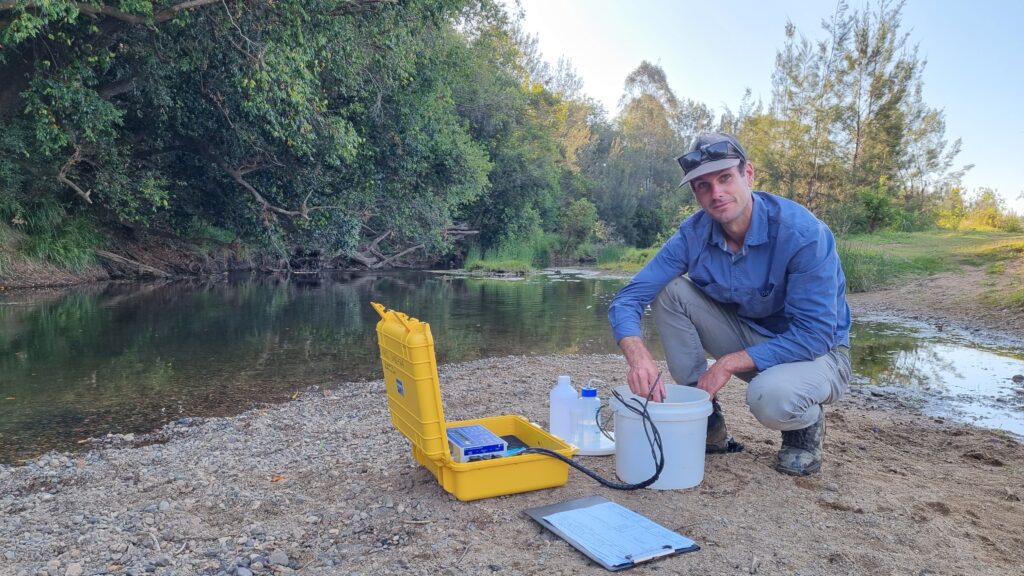
Experienced with report writing, frog monitoring, BioCondition monitoring and Index of Stream Condition assessment frog monitoring, gully monitoring and data entry.
Tom Brook – B. Sci (Hons) (Marine Science)
Experienced in riparian condition assessment, flora identification, project design, implementation and management, biocondition monitoring and evaluation, water quality monitoring and analysis, project auditing and environmental assessment, aquatic and terrestrial fauna surveying, GIS mapping .
Debbie Seal – Administration, Executive support, financial management, marketing. Support for the Mary River cod breeding program, Gympie STEM Hub, Cooloola Nature and Valley Bees.
Mackenzi Finger – Administration and finance support, marketing, project support, event coordination.
Current Projects
- Seqwater strategic design, development and implementation of sustainable catchment management initiatives to improve drinking water quality in specific reaches of the Mary River 2021-2026.
- Great Barrier Reef Foundation Reef Water Quality – Streambank, Wetland and Land Condition Recovery Project for subcatchments in the Mary River Catchment 2019-2022 – Working with grazing landholders to adopt grazing land management practices that achieve Reef Trust outcomes by reducing nutrient and sediment flowing to the Great Barrier
- Australian Government Department of Agriculture and Environment Reef Trust Phase IV Riverbank Revegetation in Strategic River Reaches – with a focus on riparian revegetation (and weed control) activities in priority reaches of the Mary
- Bruce Highway Cooroy to Curra Section D Cat’s Claw Creeper control in collaboration with the Department of Transport and Main Roads 2021-2026.
- Great Barrier Reef Sediment and Pesticide monitoring in the lower Mary and Gympie region in conjunction with the Qld Department of Environment and Science.
- Community Waterwatch Program in partnership with 110 volunteers monitoring 105 sites across the catchment, supported by the Gympie, Noosa and Sunshine Coast Councils and HQPlantations.
- Find a Frog in February catchment wide citizen science project to encourage the wider community to submit records of frogs to the MRCCC from their local
- Development of the Mary River Threatened Aquatic Species Recovery Plan in conjunction with the Australian Government Department of Environment and
- Educational activities including publishing the Codline newsletter, Mary River Month, educational programs with school students, plus workshops, field days and other festivals and
The MRCCC also auspices Valley Bees, Cooloola Nature, the Gerry Cook Fish Hatchery and the Gympie Region STEM hub.
The MRCCC Resource Centre in Gympie provides an information service for rural and urban landholders, and also offers a free basic water testing service.
Current clients
- The Australian Government Department of Water and Environment
- The Queensland Department of Transport and Main Roads
- The Queensland Department of Environment and Science
- Seqwater
- Sunshine Coast Council
- Gympie Regional Council
- Noosa Council
- Fraser Coast Regional Council
- The Burnett Mary Regional Group for Natural Resource Management
- HQPlantations
- The Noosa, Barung, Gympie and Tiaro Landcare Groups
Major Achievements
- Winning the National Rivercare Award in 2004
- Demonstrating how Integrated Catchment Management provides a model for achieving improvements in agriculture and the environment through the Reef and Biodiversity Fund projects.
- Twenty-five years working with thousands of catchment residents promoting and improving best practice sustainable land and water management.
- Facilitating the investment of over $25,000,000 in natural resource management in the Mary River Catchment
- Establishing a Resource and Information Centre in Gympie, and a permanent home for MRCCC staff
- Developing and implementing Queensland’s first whole of catchment river rehabilitation plan in 2002
- Developing and implementing Australia’s first river based multi species recovery plan targeting the threatened aquatic species of the Mary River Catchment 2012 – 2017
- Development and coordination of community Waterwatch networks since 2000, currently involving 110 volunteers monitoring 119 sites throughout the Mary Catchment.
MRCCC – Organisation particulars
Name Mary River Catchment Coordination Association Inc
Contact details
Postal address PO Box 1027, Gympie, 4570
Physical address 25 Stewart Terrace, Gympie
Phone 07 5482 4766
Fax 07 5482 5642
Email admin@mrccc.org.au
Web www.mrccc.org.au
Facebook Mary River Catchment Coordinating Committee
Date of Incorporation: 17th March 1995
Industrial relations: Compliant with National Employment Standards and entitlements
OH&S: The MRCCA is Occupational Health & Safety aware, trained and compliant
Auditor details: Levert Audit Services, Simon Green CA
ABN: 23 009 920 786
“It’s not the biggest, it’s not the longest, but I reckon it’s one of the most important rivers in Australia…………”
Professor Tim Flannery “Two on the Great Divide” ABC TV
Latest News
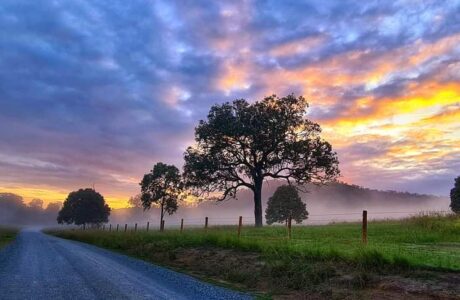
Dates with Mary 2024 – What’s on in the Mary River catchment
April 11, 2024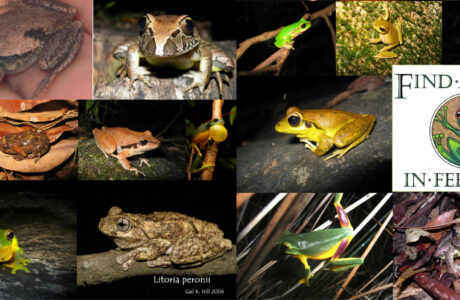
Find a Frog in February 2024
February 1, 2024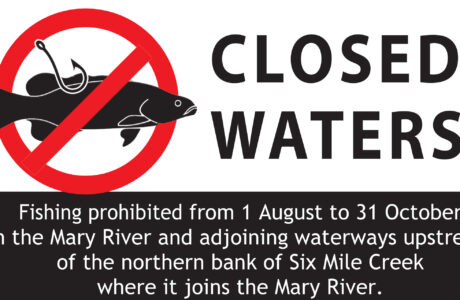
CLOSED SEASON to protect Mary River cod
September 6, 2023